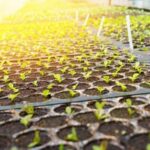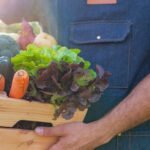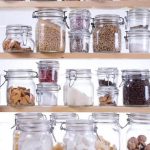Are you ready to embark on a journey of year-round vegetable gardening in Louisiana? From the chilly winters to the scorching summers, Louisiana’s climate offers both challenges and opportunities for avid gardeners. In this comprehensive guide, we will delve into the best practices and tips for vegetable gardening month by month in Louisiana. By understanding the unique soil conditions and weather patterns of the region, you can cultivate a bountiful harvest of fresh, flavorful produce throughout the year.
Louisiana’s diverse climate and soil conditions make it an ideal environment for growing a wide variety of vegetables. However, to ensure success, it is crucial to adapt your gardening techniques to each specific month’s challenges and opportunities. From preparing the soil in February to managing pests and diseases in May, each month presents its own set of tasks and considerations. Preparing yourself with knowledge is key to maximizing your gardening efforts.
Throughout this article series, we will explore the best vegetables to plant in each month, as well as essential tips for maintaining and nurturing your garden. Additionally, we will discuss strategies for coping with Louisiana’s hot summers and ensuring a successful fall planting season. Whether you’re a seasoned gardener or just starting out, this guide will equip you with all the information needed to succeed in vegetable gardening month by month in Louisiana.
Best Vegetables to Plant in January
January is the perfect time to start planning and planting your vegetable garden in Louisiana. The mild winter weather in the state allows for a variety of vegetables to be planted and grown successfully. As you embark on your vegetable gardening journey in January, there are several key factors to consider, including the types of vegetables that thrive during this time, soil preparation tips, and the importance of proper care and maintenance.
Recommended Vegetables for January Planting
When it comes to choosing the best vegetables to plant in January, it’s important to select varieties that are well-suited to the cooler temperatures of the Louisiana winter. Some top choices for January planting include leafy greens such as lettuce, spinach, and kale, as well as root vegetables like carrots and radishes. Additionally, hardy herbs such as parsley, cilantro, and chives can also be planted at this time.
Soil Preparation Tips
In order to set your January vegetable garden up for success, it’s crucial to ensure that the soil is properly prepared for planting. Start by clearing any remaining debris from previous crops and adding organic matter such as compost or well-rotted manure to enrich the soil. Consider performing a soil test to determine if any amendments are needed, and take steps to improve drainage if necessary.
Care and Maintenance
Once your chosen vegetables have been planted in January, it’s important to provide them with proper care and maintenance throughout the month. Keep an eye on moisture levels in the soil, especially during periods of dry weather or if there is a lack of rainfall. Mulching around plants can help retain moisture and suppress weeds. Additionally, be vigilant about protecting young plants from unexpected frosts by covering them with row covers or cloches when needed.
By focusing on these key aspects of vegetable gardening month by month in Louisiana during January, you can lay a strong foundation for a successful growing season ahead. With thoughtful planning, diligent care, and attention to detail, you’ll be well on your way to enjoying a bountiful harvest of fresh produce from your Louisiana garden.
Preparing the Soil for February Planting
When it comes to preparing your soil for February planting in Louisiana, there are a few key steps to ensure that your vegetables have the best chance of thriving. Here are some important tips to keep in mind as you get your garden ready for the upcoming growing season:
1. Clear the Garden Bed: Before you begin any soil preparation, it’s important to clear the garden bed of any debris, old plant material, and weeds. This will give your new plants room to grow and prevent competition for nutrients.
2. Test Your Soil: Consider getting a soil test done to determine the pH level and nutrient content of your soil. This will help you understand what amendments may be needed to optimize growing conditions for your vegetables.
3. Add Organic Matter: Adding organic matter such as compost or well-rotted manure can help improve soil structure, drainage, and fertility. Work the organic matter into the top few inches of soil using a garden fork or tiller.
4. Mulch the Beds: Once you have prepared the soil, consider adding a layer of mulch to help retain moisture, suppress weeds, and regulate soil temperature during fluctuating winter weather.
Remember that proper soil preparation is essential for setting the stage for healthy and productive vegetable gardens throughout the year in Louisiana.
By following these steps and giving careful attention to preparing your soil in February, you can set yourself up for success as you continue with your vegetable gardening month by month in Louisiana.
Maintaining and Nurturing March Vegetable Gardens
Once March rolls around in Louisiana, gardeners are gearing up for the prime planting season. With the last frost behind them, it’s time to focus on maintaining and nurturing the vegetable gardens for a successful growing season. Here are some key tips for ensuring your March vegetable garden thrives in Louisiana’s unique climate.
Soil Preparation
Before planting new crops in March, it’s essential to prepare the soil. Start by removing any weeds or debris from the garden beds. Then, incorporate organic matter such as compost or well-rotted manure to improve soil structure and fertility. Consider having your soil tested to ensure it has the appropriate pH levels and nutrient content for optimal plant growth.
Planting and Watering
March is the perfect time to sow seeds or transplant seedlings for a variety of vegetables in Louisiana. Some popular options include tomatoes, peppers, cucumbers, squash, and okra. Be sure to water newly planted seeds and seedlings regularly, especially during drier periods. Proper watering is crucial for establishing healthy root systems and promoting vigorous growth.
Maintenance
As your vegetable garden begins to flourish in March, regular maintenance is key to success. This includes tasks such as mulching around plants to retain moisture, providing support for vining crops like tomatoes and cucumbers, and staying vigilant against pests and diseases. Regularly inspect your plants for any signs of trouble and take prompt action if needed.
By following these guidelines for maintaining and nurturing March vegetable gardens in Louisiana, you can set yourself up for a bountiful harvest later in the year. Taking the time now to care for your plants will pay off with healthy, thriving vegetables that you can enjoy throughout the growing season.
Summer Crops for the Louisiana Heat in April
In April, Louisiana gardeners are faced with the challenge of the impending heat that comes with the summer months. Despite the rising temperatures, there are still plenty of vegetables that can thrive in this climate. It’s important to choose heat-tolerant varieties and to provide adequate water and shade for your crops.
Some of the best vegetables to plant in April include okra, sweet potatoes, black-eyed peas, and Southern peas. These vegetables are well-suited for Louisiana’s hot and humid conditions and can withstand the intense summer heat. In addition, consider planting heat-loving herbs such as basil, oregano, and rosemary to add flavor to your dishes throughout the summer.
To ensure the success of your summer crops in April, it’s crucial to prepare the soil properly. Make sure that your garden beds have plenty of organic matter to retain moisture and keep the soil cool. Mulching around your plants can also help regulate soil temperature and conserve water during the hotter months.
As you tend to your garden in April, be mindful of watering schedules and be on the lookout for signs of stress in your plants. Consider installing a drip irrigation system or soaker hoses to provide consistent moisture directly to the roots of your crops without promoting excess moisture on foliage which can lead to disease. With proper care and attention, you can enjoy a bountiful harvest from your summer crops despite Louisiana’s challenging climate in April.
Managing Pests and Diseases in May
As the temperatures start to rise in May, Louisiana gardeners need to be vigilant in managing pests and diseases that can threaten their vegetable gardens. The warm and humid climate of Louisiana creates the perfect conditions for the proliferation of harmful insects and plant diseases. In order to ensure a bountiful harvest, it is essential to stay on top of pest and disease management throughout the month of May.
One common pest that gardeners in Louisiana may encounter is the infamous tomato hornworm. These large green caterpillars can quickly decimate tomato plants if not dealt with promptly. Handpicking these pests off your plants and introducing natural predators such as parasitic wasps can help control their population. Additionally, keeping your garden clean and free of debris can discourage them from laying eggs.
In terms of diseases, fungal infections such as powdery mildew and blight can thrive in the warm and damp conditions of May in Louisiana. To prevent these diseases from taking hold, it’s important to practice good garden hygiene by removing any infected plant material, providing adequate air circulation, and avoiding overhead watering which can splash pathogens onto plants.
Applying preventive organic fungicides can also help protect your vegetable crops from fungal infections. With careful monitoring and prompt action, gardeners can successfully manage pests and diseases in their May vegetable gardens in Louisiana.
Harvesting Success in June
As the summer months approach, June is a crucial time for harvesting and maintaining your vegetable garden in Louisiana. With the warm weather and plenty of sunlight, many fruits and vegetables are ready to be picked and enjoyed. Here are some tips for a successful harvest in June:
1. Harvesting: In June, many early spring crops will be ready for harvesting. This includes vegetables such as lettuce, spinach, radishes, and peas. Be sure to pick these crops regularly to encourage further growth and prevent them from becoming overripe.
2. Planting for Fall: While you are enjoying the fruits of your labor from the spring planting season, it’s also important to start thinking about fall crops. In Louisiana, now is the time to start planting vegetables such as tomatoes, peppers, beans, and cucumbers for a bountiful fall harvest.
3. Watering and Maintenance: With the increasing temperatures in June, it’s essential to keep up with watering your vegetable garden. Be sure to water deeply in the mornings or evenings to avoid evaporation during the hottest part of the day. Additionally, continue to monitor for pests and diseases that may become more prevalent during this time.
4. Composting: As you harvest your crops, don’t forget about composting any plant trimmings or scraps. Compost adds valuable nutrients back into the soil which will benefit your plants as they continue to grow throughout the summer.
By following these tips for harvesting success in June, you can ensure that your vegetable garden in Louisiana continues to thrive throughout the summer months. Be mindful of watering needs, keep an eye out for pests and diseases, and start planning ahead for fall crops to enjoy fresh produce year-round.
July and August
During the months of July and August, Louisiana experiences some of its hottest temperatures, which can pose significant challenges for vegetable gardeners. However, with the right strategies and care, it is still possible to have a successful garden during this time.
One key consideration during these hot summer months is water management. With the scorching heat, vegetables require adequate hydration to thrive. It’s essential to water your garden regularly, either early in the morning or late in the evening to prevent evaporation. Consider installing a drip irrigation system or soaker hoses to ensure even watering and prevent water waste.
Another important aspect of managing Louisiana’s hot summers in your vegetable garden is providing proper shade and protection for delicate plants. Consider using shade cloth or planting taller crops on the western side of your garden to provide relief from the intense afternoon sun. Additionally, mulching around your plants can help retain moisture in the soil and regulate soil temperature.
In addition to heat and water management, it’s crucial to choose the right vegetables for this time of year. Heat-tolerant crops like okra, Southern peas, sweet potatoes, and peppers are great options for July and August in Louisiana.
These vegetables have adapted to thrive in the heat and are more likely to withstand the challenging conditions of summer in the region. By carefully selecting your crops and implementing effective gardening practices, you can successfully navigate through the challenges of Louisiana’s hot summers in your vegetable garden.
Fall Planting
When it comes to vegetable gardening month by month in Louisiana, fall planting in September and October is a crucial time for gardeners. This period marks the transition from the sweltering heat of summer to the cooler temperatures of fall, providing an ideal environment for certain vegetables to thrive. As the heat subsides and the days become shorter, it’s important for gardeners to take advantage of this optimal planting window to ensure a bountiful harvest.
For September planting, gardeners in Louisiana can start sowing seeds or transplanting seedlings of cool-season crops such as broccoli, cauliflower, kale, lettuce, spinach, and Brussels sprouts. These vegetables thrive in the milder temperatures of fall and can withstand light frost, making them well-suited for Louisiana’s climate during this time of year. Additionally, root vegetables like carrots, beets, and turnips can also be planted in September, taking advantage of the moist soil conditions after summer rains.
As October approaches, gardeners should continue their fall planting efforts with an emphasis on establishing crops that will sustain them through the winter months. This includes planting garlic cloves and onion sets for overwintering as well as expanding the patch of cool-season vegetables by adding in more lettuce varieties or sowing additional batches of spinach and kale.
By strategically planning out their fall plantings in September and October, Louisiana gardeners can set themselves up for a successful harvest even as the temperatures drop heading into winter.
Winter Care for November and December
In conclusion, vegetable gardening month by month in Louisiana presents its own set of challenges and rewards. As we wrap up the year, November and December require special attention to ensure that your garden survives the winter and thrives come spring. Taking care of your garden during these months is crucial in order to have a successful start for the following year.
November and December mark the time to prepare your garden for the colder months ahead. It’s important to protect your plants from freezing temperatures by using row covers or mulch. Additionally, taking the time to clean up your garden and remove any debris will help prevent pests and diseases from lingering over the winter. Properly caring for your garden during these months sets the stage for successful spring planting.
Frequently Asked Questions
When Should I Start Planting My Garden in Louisiana?
In Louisiana, the ideal time to start planting your garden is typically in early spring, around late March to early April. This allows the soil to warm up and minimizes the risk of frost damaging your plants.
Can You Garden Year Round in Louisiana?
Yes, it is possible to garden year-round in Louisiana due to its mild climate. With careful planning and selection of cold-hardy crops, as well as utilizing season extenders such as row covers or greenhouses, you can continue gardening throughout the year.
What Is the Growing Season in Louisiana?
The growing season in Louisiana varies depending on the region, but generally it spans from around late February or early March to November. Some areas may have a longer growing season compared to others due to differences in climate and temperatures across the state.

If you’re looking to get into vegetable gardening, or are just looking for some tips on how to make your current garden better, then you’ve come to the right place! My name is Ethel and I have been gardening for years. In this blog, I’m going to share with you some of my best tips on how to create a successful vegetable garden.





